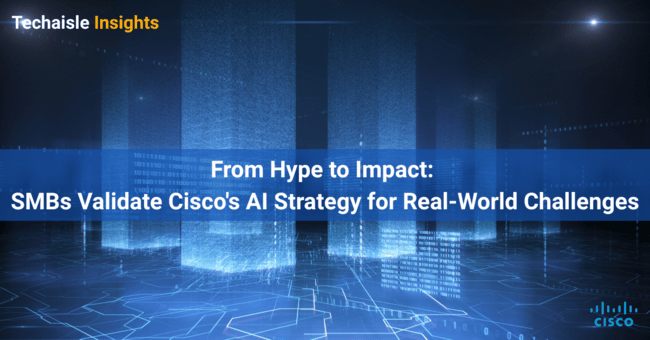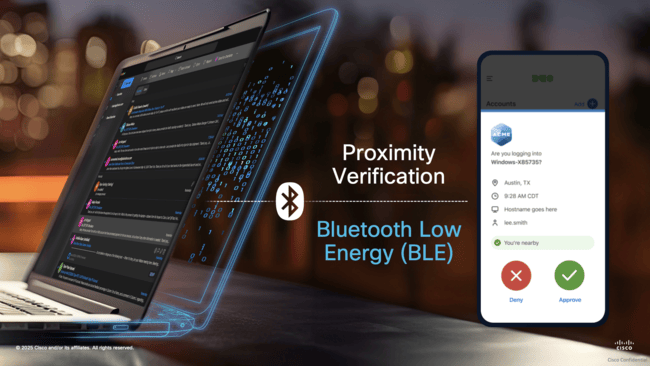RSA Conference continues to be the epicenter for cybersecurity innovation, and this year, Cisco made significant waves with a series of announcements that underscore its commitment to delivering an integrated security platform. Moving beyond disparate point solutions, Cisco’s vision focuses on empowering customers with better security outcomes, reduced operational complexities, and optimized costs. This blog post dives into the key announcements from Cisco at RSAC, highlighting their advantages and what sets Cisco apart in an increasingly crowded security landscape.
The Core Vision: An Integrated Security Platform
At the heart of Cisco's announcements lies a fundamental belief that the cybersecurity industry is undergoing rapid transformation, particularly with the rise of AI-based workloads. Recognizing the novel security challenges these advancements introduce, Cisco has been strategically focusing on converging individual security solutions and infrastructure domains into a cohesive platform. As Tom Gillis, Senior Vice President and General Manager, Cisco Infrastructure & Security, eloquently stated, the goal is to enable customers to achieve superior security with lower operating and capital expenses. This platform approach is not just about bundling products; it's about deep integration that allows for enhanced visibility, coordinated enforcement, and streamlined management.
Securing the AI Revolution: AI Defense and Beyond
One of the most pertinent announcements revolves around security for AI. Cisco has now made its capabilities for securing both the development and usage of AI applications generally available. This isn't merely about monitoring AI; it involves fine-grained controls for validating AI models and securing the use of 3rd party SaaS applications like ChatGPT and DeepSeek. For organizations developing their own AI-powered applications, Cisco offers the ability to enforce crucial guardrails.
The significant advantage is that this robust AI security is enforced on existing Cisco infrastructure, eliminating the need to deploy new, standalone solutions. The telemetry gathered from AI security measures seamlessly feeds into Splunk and provides enhanced visibility within Cisco XDR. This integration ensures a holistic view of the security posture, encompassing traditional threats and emerging AI-related risks.
Furthermore, Cisco acknowledges that securing AI requires an ecosystem approach. This is evidenced by its brand-new product and go-to-market partnership with ServiceNow. This collaboration aims to hydrate ServiceNow's AI risk and governance portfolio with Cisco's security intelligence, providing joint customers with comprehensive value as they increasingly adopt AI. This partnership spans visibility into application usage and model vulnerabilities to real-time protection and incident triage. By working closely with leaders in adjacent domains, Cisco is differentiating itself by offering a more comprehensive and integrated solution for managing AI risks.
The Distributed Future of Security: Hybrid Mesh Firewall
Cisco is betting big on a future where security enforcement is distributed, moving beyond the limitations of traditional perimeter-based firewalls. Its hybrid mesh firewall initiative embodies this vision, fusing security into the very fabric of network connectivity. This approach extends across physical and virtual firewalls and modern workload environments like VMs and containers, leveraging technologies such as Secure Workload, Isovalent Enterprise Platform for Cilium (with eBPF), and Hypershield. The key advantage here is the fungibility of enforcement – customers can apply consistent security policies across diverse environments without the need for a disruptive "rip and replace". Licensing is designed to be flexible, with customers using a pool of tokens that can be applied to different enforcement points as their needs evolve.
A groundbreaking component of this strategy is the introduction of new smart switches where every switch port functions as a layer 4 stateful line-rate firewall. This radical integration simplifies network architecture, reduces operational overhead, and addresses challenges like space and cooling. This is a unique offering in the market, showcasing Cisco's ability to deeply embed security within its core networking infrastructure.
Recognizing that customers often have heterogeneous environments, Cisco's hybrid mesh firewall will also support the security policy management of third-party firewalls. While initially focusing on layer three and layer four policy groups for segmentation, this capability allows for centralized policy management through Security Cloud Control. Support includes major vendors like Fortinet, Palo Alto, Juniper, and Checkpoint. This demonstrates Cisco’s commitment to providing value even in multi-vendor environments, moving towards a unified security posture management.














